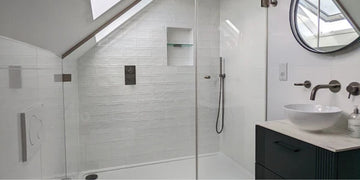In the era of advanced technology, the concept of smart homes has taken center stage, and bathrooms are no exception. Understanding how smart bathrooms work is crucial for those in the industry, especially Quality Assurance professionals, as they ensure these innovative solutions meet high standards of functionality and safety.
Smart bathrooms are a testament to how modern technology is reshaping our living spaces. From intelligent toilets that conserve water to mirrors that offer weather updates, these innovations are designed to enhance convenience, efficiency, and luxury. Let's delve into the fascinating world of smart bathrooms and explore the technology that powers them.

What Makes a Bathroom Smart?
A smart bathroom integrates various technological elements to provide an enhanced user experience. These elements include automated lighting, smart showers, intelligent toilets, and even voice-activated features. The primary goal is to offer convenience and efficiency, making everyday routines more seamless and enjoyable.
For instance, smart showers can be programmed to your preferred temperature and even pause the water flow when you step away. This not only adds a level of luxury but also promotes water conservation, a critical aspect of sustainable living. More insights on efficient bathroom fixtures can be found here.
Key Components of Smart Bathrooms
1. Intelligent Toilets
Intelligent toilets are equipped with features like automatic flushing, bidet functions, and even self-cleaning capabilities. These toilets often have built-in sensors that ensure optimal hygiene and water efficiency. The use of smart toilets is becoming increasingly popular due to their eco-friendly and user-friendly nature.
2. Smart Showers
Smart showers allow users to control water temperature and flow through smartphone apps or voice commands. Some models come with features like aromatherapy and LED lighting, transforming your shower experience into a spa-like retreat. This evolution in shower technology not only enhances comfort but also aids in conserving water.
3. Innovative Mirrors
Mirrors in smart bathrooms are not just for reflection; they come with embedded technology that provides weather updates, news, and even personal calendars. Some smart mirrors also feature anti-fog capabilities and integrated lighting, offering convenience and functionality.
4. Automated Lighting and Ventilation
Lighting and ventilation are critical components of any bathroom. In smart bathrooms, these systems are automated to adjust based on occupancy and time of day, enhancing energy efficiency and comfort. Motion sensors and timers play a significant role in optimizing these features.
The Role of IoT in Smart Bathrooms
The Internet of Things (IoT) is at the core of how smart bathrooms work. IoT devices communicate with each other, creating a network that enhances the functionality and efficiency of bathroom systems. This connectivity allows for seamless integration of various smart devices, ensuring a cohesive and user-friendly experience.
For example, a smart bathroom can automatically adjust lighting and temperature based on user preferences, providing an unparalleled level of comfort and personalization. Learn more about how IoT is shaping smart bathroom designs in this detailed article.
Challenges and Considerations
While smart bathrooms offer numerous benefits, they also present some challenges. Ensuring data security and privacy is paramount, as many smart devices collect and store user information. Additionally, the initial cost of installing smart bathroom technologies can be high, though the long-term savings and conveniences often outweigh these costs.
Quality Assurance professionals play a crucial role in addressing these challenges, ensuring that smart bathroom products meet industry standards and provide a safe, reliable user experience.
The Future of Smart Bathrooms
As technology continues to evolve, the future of smart bathrooms looks promising. Innovations such as augmented reality (AR) for virtual bathroom design and voice-activated systems for a completely hands-free experience are on the horizon. These advancements will further enhance the functionality, efficiency, and luxury of smart bathrooms, making them an integral part of modern homes.
For those interested in exploring stylish bathroom designs, check out these stylish design ideas.
Conclusion
Understanding how smart bathrooms work is essential for industry professionals, particularly those in Quality Assurance, as they ensure these technologies meet the highest standards. As we continue to embrace smart home innovations, bathrooms will remain a key area of development, offering enhanced comfort, efficiency, and luxury.

FAQs
What are the benefits of smart bathrooms?
Smart bathrooms offer increased convenience, energy efficiency, and water conservation. They also enhance user experience through personalized settings and integrated technology.
Are smart bathrooms expensive to install?
While the initial cost can be high, smart bathrooms often provide long-term savings through energy and water efficiency. The investment can be worthwhile considering the enhanced functionality and luxury.
How do smart bathrooms contribute to sustainability?
Smart bathrooms promote sustainability by conserving water and energy. Features like smart showers and toilets reduce waste, aligning with eco-friendly living practices.






